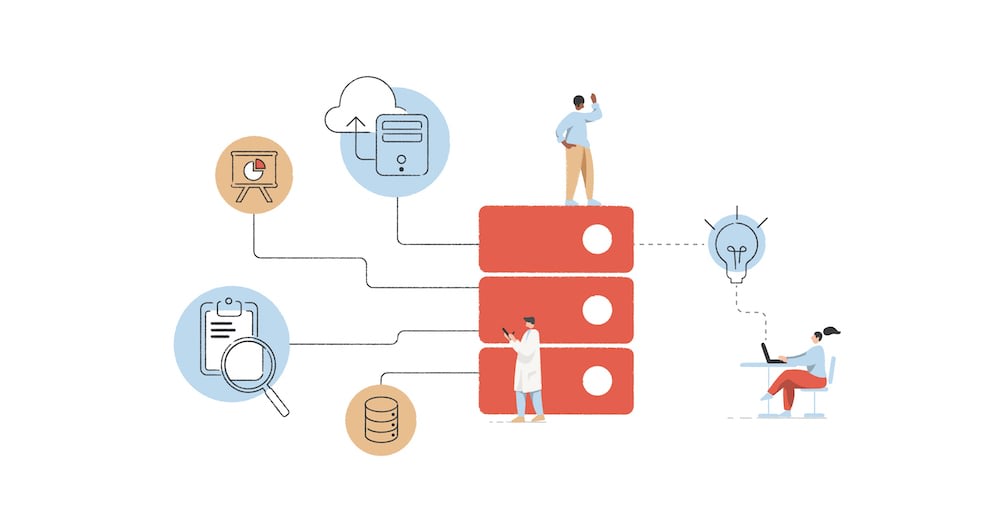Data
Apr 08, 2021
Understanding data and analytics maturity: A focus on Culture and DataOps

In our last article, we explored the ‘Strategy’ and ‘Alignment’ aspects of our data & analytics maturity model. In this article, we will be focusing on the importance of culture in enabling data & analytics maturity, as well as how the implementation of new practices such as DataOps, DataGovOps, and Agile Data Governance can accelerate your data & analytics programmes.

Examining and adapting an organisation’s culture is critical to the success of any digital transformation, and data & analytics programmes are no different. Business transformation often goes unnoticed as delivery teams become fixated on the latest technologies. As a result, tangible outcomes do not materialise as the organisation fails to adapt to new ways of working.
In our experience, there are three key cultural factors that can have an adverse effect on an organisation’s digital transformation:
Embracing what is new: In any change initiative, there will a subset of people who are resistant to change. It is important to uncover and understand why the idea of change is difficult for these people to accept and help them adapt to the new ways of working.
Valuing the change: Many of your colleagues won’t appreciate the true value of change - such as making their jobs easier and more efficient - and therefore won’t give you the sponsorship that you need. Communicating the benefits early and often will help to avoid programme delays and resistance.
Building greater trust: Poor data quality, a lack of data literacy, and a history of failed change programmes may have created organisational scepticism of your programme. Understand how best to convince people that this time, it will be different.
The role of the CDO
Cultural change can be difficult to achieve and maintain, so it is important to get the organisation excited by a vision that demonstrates tangible benefits to colleagues. Whilst a vision is a standard component of any change programme, we believe that data & analytics transformations in particular require a network of effective and influential leaders to champion change and advocate for the importance and value of data. For this reason, we recommend that organisations hire a Chief Data Officer (CDO).
A CDO provides not only leadership and C-level sponsorship for the business’ data driven agenda, but also acts to promote the importance of data internally, ensuring that business needs are prioritised and new data capabilities and practices are adopted. By having the ability to engage with the business from the top-down, the CDO can ensure that the transformation reaps visible benefits.
Promoting data literacy
New tools are ineffective without people who can use them, so organisations need to consider how data literacy levels can be improved internally. Data literacy can be defined as ‘the ability to derive meaningful information from data, just as literacy… is the ability to derive information from the written word.’ (The Age of Data Literacy, Uldis Leiterts’ at TEDx).
If you are looking to completely transform your organisation with data, you need to be achieving solutions of a far greater analytical complexity than the Excel models of old - especially in the context of big data.
To do this, many organisations are hiring data scientists and engineers to advance their skills. However, data literacy is required at all levels of the organisation, not just in centres of excellence. Start by defining what data literacy skills need to be fostered across your organisation and how best to encourage and monitor the development of these skills. This can include:
Identifying the rights tools and methods for the job through an awareness of modern trends;
Mining and interpreting data through visualisations, analysis, and modelling relationships;
Having the ability to operationalise complex solutions through automation, testing, and deployment;
Communicating insights through data storytelling and understanding how to make an impact.
To truly embed a data culture within your organisation, ensure that people outside of technical functions can understand and use data by fostering a culture of learning across the company. After all, “the fastest way to a big idea is to cultivate a data-driven, test-and-learn culture” (Analytics comes of age, McKinsey, 2018).
DataOps & DataGovOps
In recent years, DevOps has provided a method for the continuous delivery of software by automating test and deployment and merging software development and IT operations.
As the world continues to change and new paradigms for data & analytics evolve, the methods of DevOps are increasingly being adopted into the world of data & analytics. We believe that there are two trends that organisations need to prepare for: DataOps and DataGovOps.
DataOps is an automated, process-oriented methodology used to improve the quality and delivery time of data analytics solutions. It represents a new approach to the entire analytics lifecycle, recognising the interconnectedness of analytics & IT teams as well as the importance of the Agile methodology in shortening cycle times and ensuring continuous alignment to business goals.
Using statistical process control (SPC) to monitor and control data analytics pipelines, DataOps enables continuous improvement through automated alerts, technologies, architectural patterns, language, and frameworks that promote collaboration between business, analytics, and data management teams.
All of this means that DataOps allows organisations to significantly increase the velocity and quality of prototyping, whilst minimising data errors and providing greater transparency in analytics.
DataGovOps applies these same principles to provide continuous governance, compliance, and issue remediation across the analytics lifecycle through a “governance-as-code” approach, continuously executing in tandem with development & deployment to promote the safe use of data at scale.
This involves baking in continuous measurement of data quality, automated updates to Data Catalogues, and transparent processing lineage from source. Development projects are therefore designed with Data Governance in mind and adopt best practices right from the outset.
Whilst DataOps and DataGovOps may be new concepts, the principles and practices on which they are built have existed in software development for some time. Adopting them will not only drive you towards a much more data driven culture and empower business leaders to lead the change, but also allow you to demonstrate value in a much more tangible way.
Agile Data Governance
In addition to the above, Agile Data Governance provides a new way of operationalising traditional Data Governance. This is done by taking it out of the Data Management Office and by operationalising SMEs that join delivery teams to ensure that data policies and standards are adopted and complied with.
This provides a real-time issue capture, escalation, and remediation mechanism across a ‘shared responsibility model.’ That way, everybody is responsible for treating data as an asset. It also reflects the fact that the design & delivery of analytics is increasingly federated and so governance approaches need to be focused on enabling teams to deliver value, rather than restricting what they can do.
Don’t forget about data ethics
Finally, we recommend that as part of changing your organisation’s culture, you elevate and champion the importance of data ethics. With an increasing focus on ethical and regulatory scrutiny, as well as the growing complexity of analytical solutions, it is essential that everyone who collects, shares, or uses data is supported in managing ethical issues throughout their project lifecycles.
To support this, consider developing approachable ethical frameworks that will enable your colleagues to navigate risks, improve project planning, and increase management trust that ethical and regulatory risks are being managed in the long-term and across all critical initiatives.
Key takeaways
Organisations should review their current culture to identify potential transformation blockers and resistance, as well as determine which actions can be taken to overcome them.
Consider what type of leadership – for example, a CDO - could help drive cultural change, as well as increase data literacy across programmes to promote key skills and a ‘data-first’ culture.
Review practices and ways of working and adapt them to the requirements of the business, aligning them to modern architecture and delivery patterns such as DataOps & DataGovOps.
What to expect in our next article
In our next installment, we will be discussing the importance of operating models and platforms in enabling data & analytics and increasing productivity. If you have any questions about the topics discussed in this article or would like us to help you assess your data maturity, please get in touch with one of our experts.
Contact Us
Ready to achieve your vision? We're here to help.
We'd love to start a conversation. Fill out the form and we'll connect you with the right person.
Searching for a new career?
View job openings